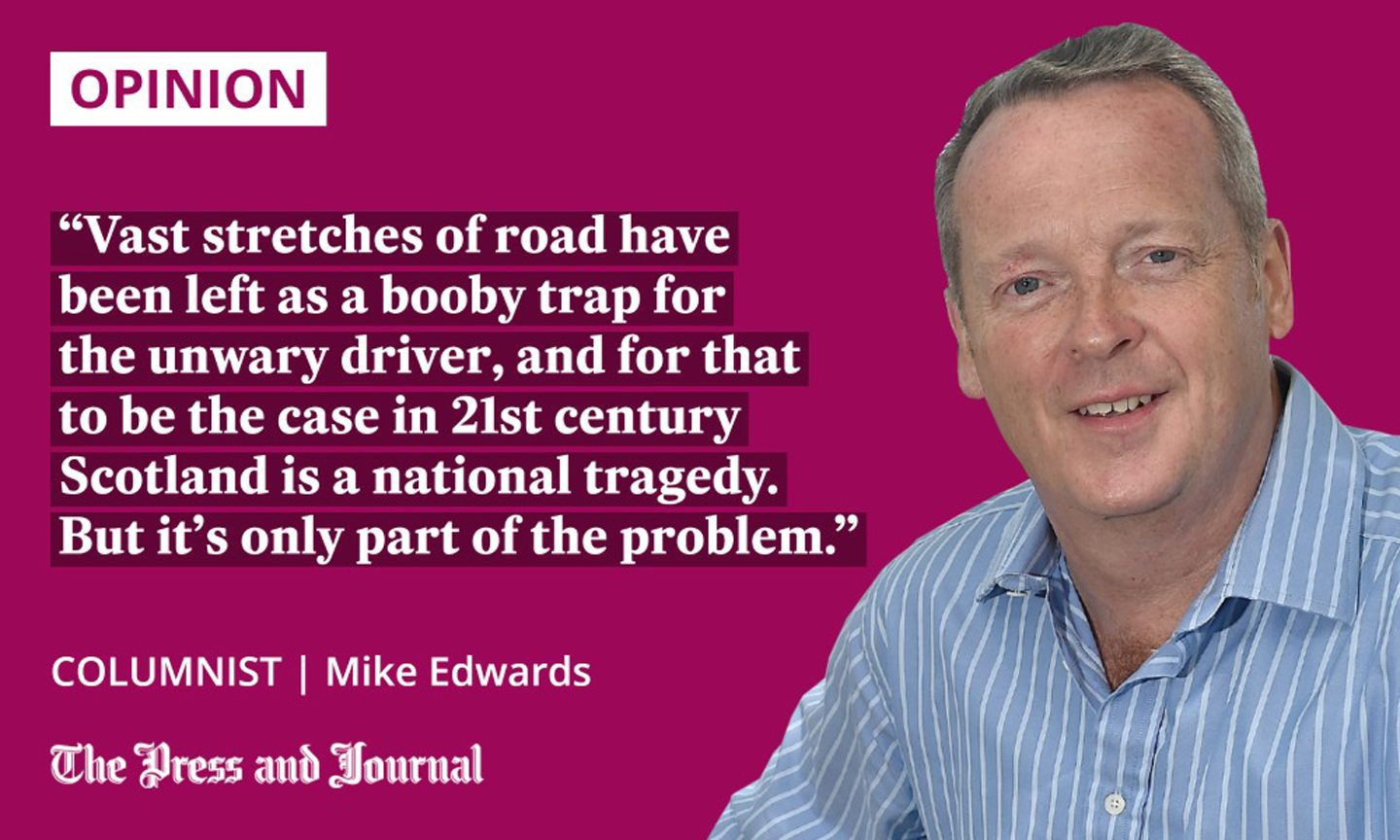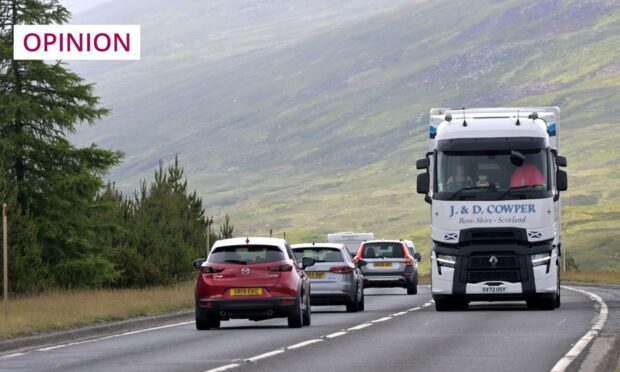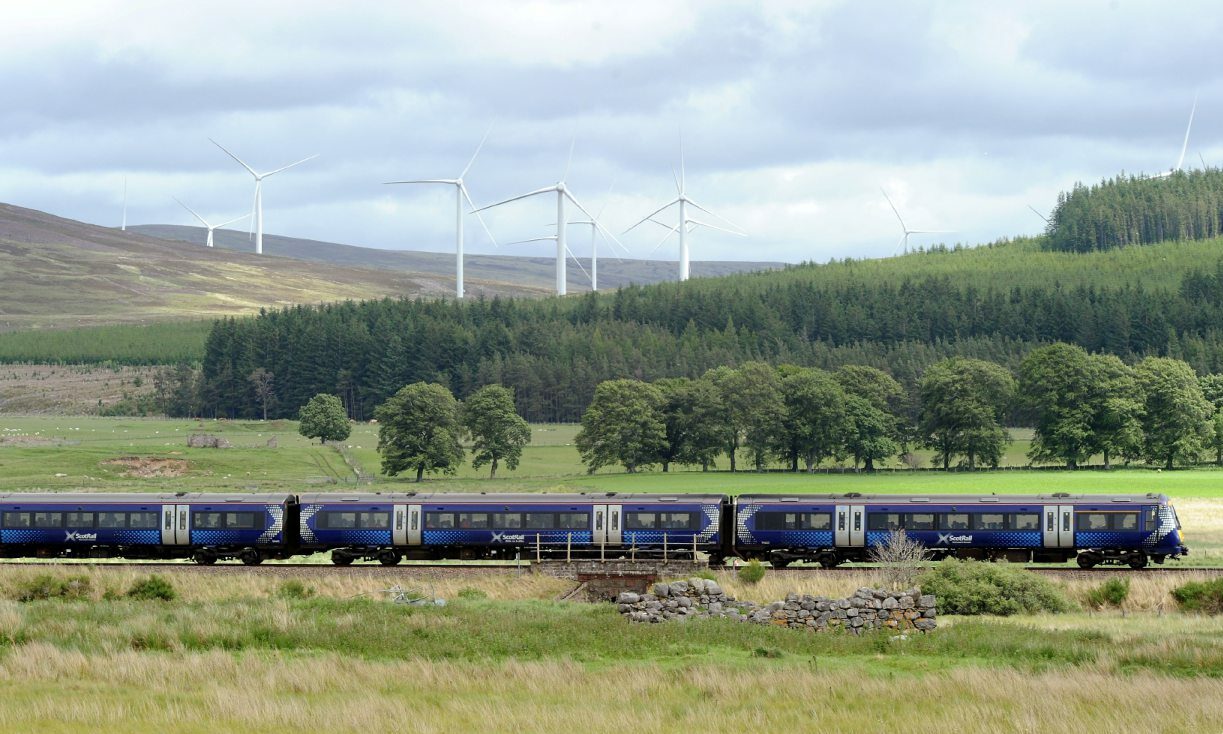Back in the day, when I was a jobbing journalist, I must have covered thousands of miles every year on Scotland’s high roads and low roads.
The best bit about being a TV reporter was that every day was different, and I didn’t spend my time sitting in an office, looking out of the window, wishing I was outside.
There were unwritten rules about the confessional of the crew car – so-called because reporters spent more time with camera operators than their partners, and what was said in the crew car stayed there.
The camera operator always drove, the sound engineer (when there were such things) was the front seat passenger, the lighting engineer (an even rarer species) sat in the back, and the reporter, in my view the most important team member, sat behind the driver and was seldom allowed to speak and rarely about the story being worked on.
Then, shortly after I joined, came the bloodletting and, after the massive redundancy packages were handed out, the team comprised just the reporter and the camera operator.
Any queasiness I may have felt about reading while in a car disappeared overnight, as I learned to scribble scripts on the back of a bookies slip while on the move. Car phones were in their infancy, and it was a novelty to use one and simultaneously scrawl down instructions dictated by the news desk.
Happily, I was already a dab hand at map-reading, thanks to Mr Semple the Inverness High School geography teacher and Colour sergeant Frew of the Royal Highland Fusiliers, so navigation was not an issue for me in those pre-satnav days.

And, because I was a small town boy who had yet to earn his big city wings, daft little things on the road excited me. If I saw a car with an ST or AS number plate, I immediately felt homesick for Inverness. But, when I saw the familiar red and white logo of a Highland Haulage lorry, anywhere in the country, my chest would swell with pride and I would dab a tear from my eye.
But then…
My nostalgia disappeared pretty quickly and was replaced by pity when I realised that whoever was behind the wheel of that HH lorry would have had to drive the A9 not once but twice that day. That is surely more of a burden than any mortal soul should be expected to endure.
Driving behaviour makes the A9 exceptionally dangerous
Speed was never my thing. Cars leave me cold. So, fast cars were never an option for me. All I can tell you about the car I drive today is that it is white, drinks petrol not diesel, and happily still has an operational CD player. And, if there is a train option for wherever I’m going, I will always leave the car at home. Which takes me out of a siding and onto the main line to make my point.
The A9 is an inanimate object. It is a stretch of road which links the Highlands with the Lowlands. In my view, it is no more or less dangerous than any other stretch of road in Scotland. What makes it a dangerous place to be, and there’s a difference, is the driving behaviour of the people who use it.
In my four decades of experience of transiting between Inverness and the south, I have seen how this danger is exacerbated by frustrated drivers of fast cars getting stuck behind slow-moving lorries, and venting their ire by making a dangerous manoeuvre at the slightest opportunity.
Happily, I now have the time to plan journeys. If I am going to or from Inverness by road, I avoid the A9 at all costs and travel on the A82 instead. I have seen more accidents and near misses than I care to think about on the former, while motorists on the latter seem to know its limitations and drive accordingly.
Not a political point, but a practical one
The A9 is a slow road driven by fast drivers. Anyway, the views are far nicer along Loch Ness and Loch Lomond than even those at Druimachdar.
More freight should travel between Inverness and the south by rail, and cars should be transported the length of the A9 on special trains
This is not a political point, rather a practical one. Yes, of course the A9 should be dualled all the way between Inverness and Perth; that it is not is a disgrace. Instead, vast stretches of road have been left as a booby trap for the unwary driver, and for that to be the case in 21st century Scotland is a national tragedy. But it’s only part of the problem.
More freight should travel between Inverness and the south by rail, and cars should be transported the length of the A9 on special trains as they are through the Channel Tunnel and the Swiss Alps. If improving the A9 is not a priority for this government, or any other, then the focus should shift onto changing the traffic that uses it.
Mike Edwards OBE was the face of the evening news on STV for more than 25 years and is a published author, a charity trustee and a serving Army Reservist

